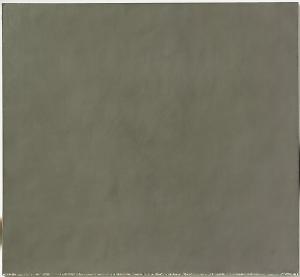Brice Marden
Brice Marden
Lugar: Bronxville
Nascido: 1938
Biografia:
Brice Marden (born October 15, 1938), is an American artist, generally described as Minimalist, although his work may be hard to categorize. He lives and works in New York City; Tivoli, New York; Hydra, Greece; and Eagles Mere, Pennsylvania.
He was born as Nicholas Brice Marden Jr. in Bronxville, New York and grew up in nearby Briarcliff Manor. He attended Florida Southern College, Lakeland from 1957 to 1958, and receiving his BFA from the Boston University, School of Fine and Applied Arts in 1961. Marden earned his MFA from the Yale School of Art and Architecture (1963), where he studied with Esteban Vicente, Alex Katz, Jon Schueler, Jack Tworkov, Reginald Pollack, Philip Pearlstein, and Gabor Peterdi. Among his fellow students were the future artists Richard Serra, Chuck Close, Vija Celmins, Nancy Graves, Gary Hudson and Robert Mangold. As he studied art, Marden was also immersed in the Cambridge folk music world. His first wife, Pauline Baez, whom he married in 1960, is Joan Baez's sister. He met Bob Dylan and Pete Seeger and lived for a while at Joan Baez's house in Carmel, California.
It was at Yale that Marden developed the formal strategies that would characterize his drawings and paintings in the proceeding decades: a preoccupation with rectangular formats, and the repeated use of a muted palette. In his early work of the 1960s and 1970s, he used simplified means, typically monochrome canvases either alone or in series of panels, diptychs or triptychs. These include the works The Dylan Painting, 1966; "1986" (now in the collection of San Francisco Museum of Modern Art); 1969's Fave (the Jack S. Blanton Museum of Art, University of Texas at Austin); and Lethykos (for Tonto), 1976 (The Museum of Modern Art, New York).
Marden relocated to New York in 1963, where he came into contact with the work of Jasper Johns while employed as a guard at the Jewish Museum, New York during the museum's Johns's 1964 retrospective. The following summer Marden traveled to Paris where he began to make compressed charcoal and graphite grid-patterned drawings. Marden's graphic works are a corollary to his paintings, and he would transfer ideas into even his most recent paintings and drawings. Marden made his first monochromatic single-panel painting in the winter of 1964. It was also in Paris that he admired the work of Alberto Giacometti and Jean Fautrier, although masters such as Francisco de Zurbarán, Diego Velázquez, and Édouard Manet have also informed Marden's artistic practice.
In 1966, at Dorothea Rockburne's suggestion, Marden was hired by Robert Rauschenberg to work as his assistant. That same year he had his first solo show in New York at the Bykert Gallery, which exhibited the first of his classic oil-and-beeswax paintings.
In the late 1960s and early '70s, a moment when painting was widely considered moribund, Marden gained international fame as the master of the monochrome panel. In 1971, Brice and his wife, Helen Harrington, visited the Greek island of Hydra, to which they have returned every year since. The couple bought their first home there in 1973. The light and landscape have greatly influenced Marden's work (see, for instance, the five Grove Group paintings, 1972–1980; Souvenir de Grèce works on paper, 1974–1996). Executed in oil on marble fragments, he made a total of 31 paintings on marble on Hydra.
Marden’s early monochromatic paintings exist as single panels, diptychs and triptychs. In each of the four Red Yellow Blue paintings (1974), the artist painted slabs of dense yet nuanced color on three adjoined canvas panels, using oil paint mixed on the spot with melted beeswax and turpentine and applied with a knife and spatula. He gradually increased the number of panels, arranging them into post-and-lintel configurations. After preparing designs for stained-glass windows for Basle Cathedral in 1977, he became interested in expressing in his paintings the conditions of colour and light in architecture. Between 1981-87, Marden made a total of 31 paintings on marble, all of them produced in Hydra.
In 1977, Marden traveled to Rome and Pompeii, where he strengthened his interest in Roman and Greek art and architecture, which would influence his work of the late 1970s and early 1980s. In 1983, Marden and family traveled to Thailand, Sri Lanka, and India; the artist became fascinated by the art, landscape, and culture of parts of Asia. Marden has subsequently incorporated numerous elements of certain Asian traditions into his work, making them one key to his process (the Shell Drawings, 1985–87). A visit in 1984 to the exhibition Masters of Japanese Calligraphy, 8th-19th Century, encouraged Marden to use form, a predominant influence in his recent work—which can be seen in his acclaimed Cold Mountain series, both paintings and works on paper, 1989-1991. Combining airy, calligraphic scaffoldings of line with whitish or palely tinted backgrounds, these 9-by-12-foot paintings were the biggest Marden had made to that point.
More...
Wikipedia link: Click Here






